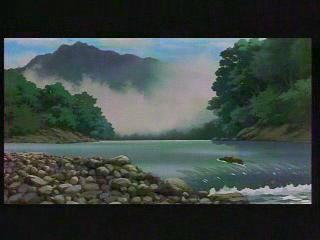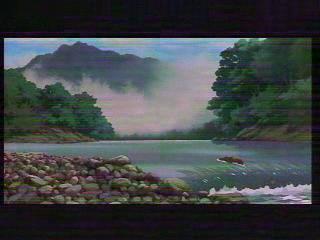The 8×8 Inverse discrete cosine transform used in most video codecs converts the very sparse and thus easily compressible dct coefficient matrixes into the 8×8 blocks vissible or the 8×8 difference relative to some area from the previous frame
The IDCT in these codecs is not exactly specified, instead the MPEG and ITU commitees only require the used IDCT to be approximately equal to a idealized and very slow reference IDCT due to that, decoders and encoders use various different IDCTs, if the actually used encoder and decoder happen to use 2 different enough IDCTs and the video material, encoding parameters, moon phase and so on match then the tiny +-1 differences between the IDCTs will accumulate and turn the pale face of a corpse pink or green or add stripes or worse …
some examples of such artifacts:
 |
 |
| LLM/IJG int |
simpleidct |
 |
 |
| libmpeg2 idct |
xvids idct |
 |
 |
| LLM/IJG int |
simpleidct |
 |
 |
| libmpeg2 idct |
xvids idct |
Its also very important to keep in mind that these artifacts are caused by the difference between the encoder and decoder IDCT and not the difference to some idealized IDCT only on the decoder side, so using the reference IDCT on the decoder side will often not help at all, and sometimes might make the artifacts worse
now maybe you are curious which IDCT was used in the encoders for the 2 examples above, well iam curious too about that as theres no 100% certain way to find out, allthough i would guess the first used the idct from the msmpeg4v3 codec and the second the one from xvid
Which prameters can be tuned on the encoder side to reduce these artifacts? First use a smaller keyframe interval, then avoid qp=1, avoid qpel and use lots of b frames or use H.264 which doesnt suffer from this mess as it has a exactly specified idct approximation








 Original
Original unfiltered
unfiltered pp=hb/vb/dr/fq=8
pp=hb/vb/dr/fq=8 pp=hb/vb/dr/fq=16
pp=hb/vb/dr/fq=16 pp=hb/vb/dr/fq=32
pp=hb/vb/dr/fq=32 spp=6:8
spp=6:8 spp=6:16
spp=6:16 spp=6:32
spp=6:32 uspp=6:8
uspp=6:8 uspp=6:16
uspp=6:16 uspp=6:32
uspp=6:32